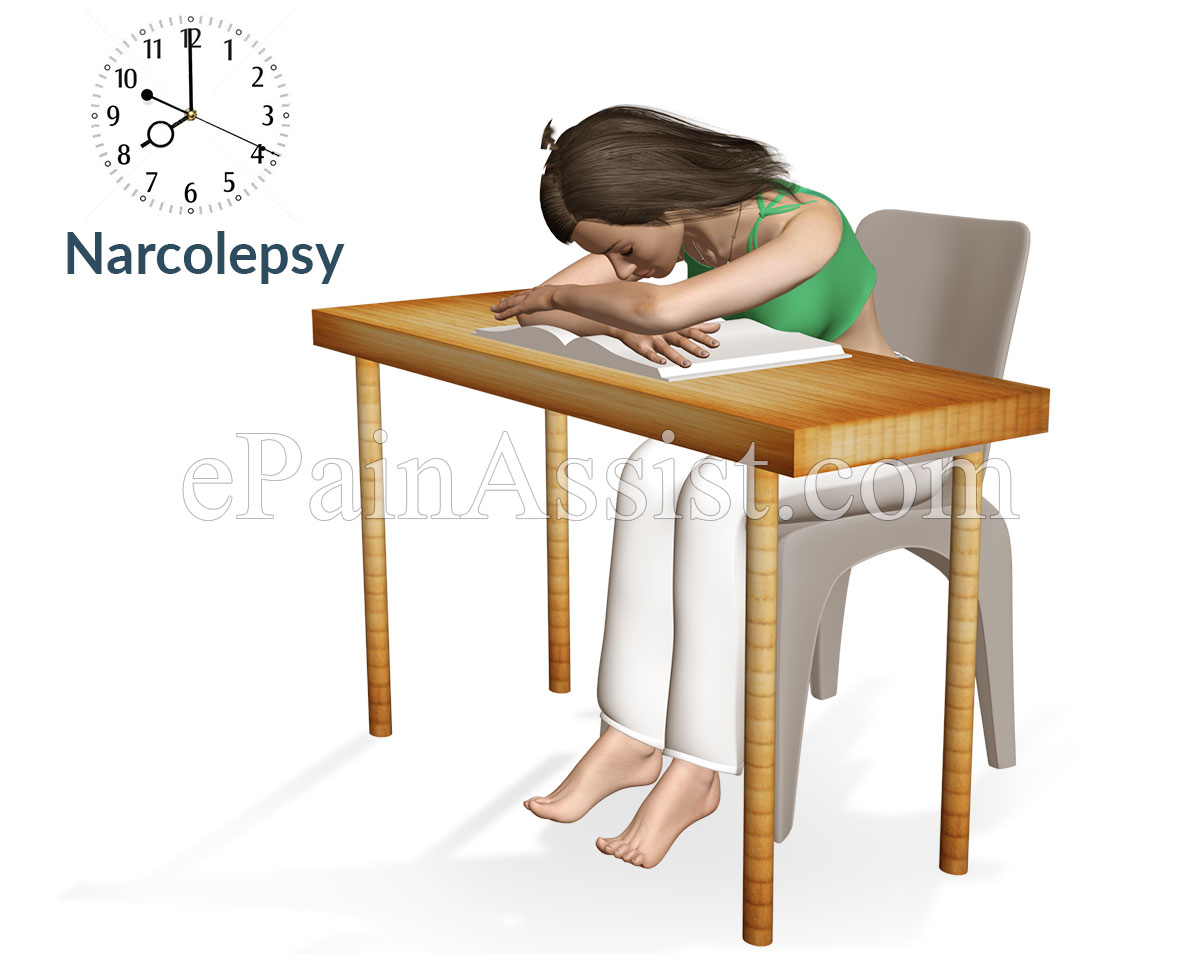Narcolepsy is a chronic neurological disease which is due to the inability of brain to maintain a sleep-wake cycle in a normal fashion. Generally, the people with narcolepsy have a disturbed sleep at night and will have an abnormal sleep pattern in the day. Thus, narcolepsy is often confused with insomnia.

Narcolepsy is a sleep disorder due to a neurological condition and is not caused by any mental disorder or psychological illness. Narcolepsy is most likely affected by numerous genetic mutations affecting biological factors in the brain, which can be combined with environmental causes during the development of the brain; for example, a virus
Symptoms of Narcolepsy
The main feature of narcolepsy is a term called Excessive Daytime Sleepiness. After a good night’s sleep, an individual suffering from narcolepsy falls asleep in the day and feels tired throughout the day. The person may fall asleep at improper times or places. People suffering from narcolepsy are unable to get the type of deep resting sleep that normal healthy individuals get. It cannot be said that narcoleptics oversleep; in fact they have severe sleep deprivation. These daytime naps are very overwhelming and narcoleptics are not able to resist it. These naps refresh them but for a short period only. Narcoleptics may also experience vivid dreams during sleep or even naps. Such people get only fragmented sleep.
- EDS or Excessive Daytime Sleepiness: generally starts off very mildly. Narcoleptics become so habituated to the tiredness that they do not see anything unusual in their sleeping pattern or tiredness during the day. The symptoms of narcolepsy are termed as cataplexy, inability to move the body during sleeping or upon awakening also called as sleep paralysis, hypnologic hallucinations, and excessive daytime sleepiness.
- Cataplexy: it is a term used when where there is episodic muscle function deficit and slight weakness in the neck, floppy facial muscles, bulking of the knees, not able to converse fluently or clearly. They can be brought out by unexpected emotional responses like laughing, anger, or fear. They can last from seconds to minutes. There is no alteration of consciousness during the episode. Generally, the person may have slurred speech and Diplopia. These episodes have severe emotional influence on narcoleptics since it causes severe anxiety and fear and may lead people to avoid situations which may trigger an attack.
- Sleep paralysis: It is a term used for the lack of ability to move the body at the time of getting up from sleep or when about to fall asleep which lasts minutes.
- Hypnogogic hallucinations: It is a term used for periods of hallucinations when a person is about to fall asleep. They can be very frightening and often cause sudden arousal.
In almost all of the cases, the very first symptom to occur in narcolepsy is excessive daytime sleepiness with other symptoms following in some months or in some cases even years after EDS begins. EDS is generally a lifelong condition whereas other symptoms tend to cease.
Many narcoleptics also have lack of sleep for extended periods. EDS and cataplexy in narcoleptics become so severe that they start affecting an individual in the personal and professional front.
Causes of Narcolepsy
The exact cause of narcolepsy could not be found out for quite a few years, but scientists have found out about certain conditions that increase the risk of a person having this disorder. There also seems to be a connection between narcolepsy and some genetic conditions. A factor that predisposes a person to narcolepsy involves an area of Chromosome 6 called the HLA complex.
Diagnosis for Narcolepsy
The diagnosis of narcolepsy becomes very easy when all the symptoms described above are present in an individual, but if the symptoms are very mild and far between then the diagnosis becomes that much more difficult. There may also be a possibility that a person may have isolated episodes of cataplexy. The tests that are most common for the diagnosis of narcolepsy are polysomnogram, MSLT, and finding out the Epworth Sleepiness Score of a person.
- Polysomnogram: This is a test in which the specialist continuously records brain waves and nerve and muscle functions during sleep. During the testing, narcoleptics fall asleep readily, but awaken frequently. Polysomnogram is used to rule out or rule in other causes of daytime sleepiness.
- Epworth Sleepiness Scale: This is a series of questions that an individual is asked to fill out which determines whether a person has a sleep impairment or not to include narcolepsy.
- Multiple Sleep Latency Test: This is also called MSLT. In this, a person is taken for an overnight sleep study and the next day the patient goes through a series of tests where the patient is asked to take a nap after a full night’s sleep and observations are made about sleep onset latency. This is done to determine as to what degree there is daytime sleepiness.
Treatment of Narcolepsy
- There is no clear cut cure for narcolepsy. Treatment is designed and differs from person to person based in the individual’s symptoms and response to treatment. The amount of time needed for maximal control of symptoms is quite variable and may take months, if not more and complete control of symptoms is very rarely possible. Although oral medicines are the first line of treatment for narcolepsy, lifestyle changes also play a key role in the treatment of narcolepsy.
- The drugs of choice for excessive daytime sleepiness are methylphenidate, amphetamine, methamphetamine etc., which are central nervous system stimulants. Cataplexy is usually treated with drugs like clomipramine or imipramine.
- Apart from using medications, it is important for a person suffering from narcolepsy to take short naps a couple of times to aid in control of EDS.
- Mayo Clinic. (2021). Narcolepsy. https://www.mayoclinic.org/diseases-conditions/narcolepsy/symptoms-causes/syc-20375497
- MedlinePlus. (2021). Narcolepsy. https://medlineplus.gov/genetics/condition/narcolepsy/
- American Sleep Association. (2021). Narcolepsy: Symptoms, Causes, and Treatment. https://www.sleepassociation.org/sleep-disorders/narcolepsy/
- Stanford Medicine. (2021). Narcolepsy. https://stanfordhealthcare.org/medical-conditions/sleep/narcolepsy.html
- Sleep Foundation. (2021). Narcolepsy Guide. https://www.sleepfoundation.org/narcolepsy
Also Read:
